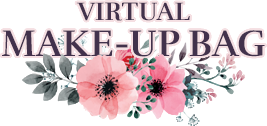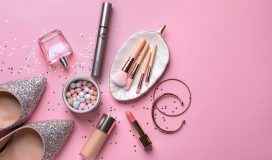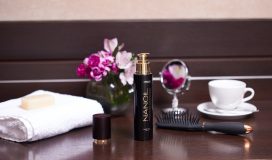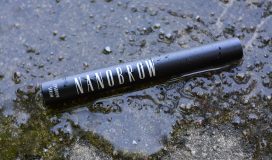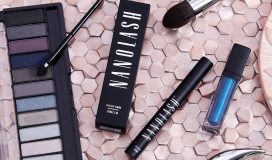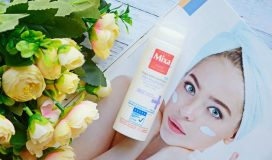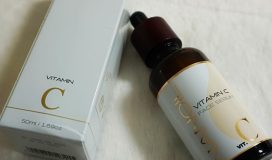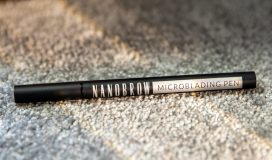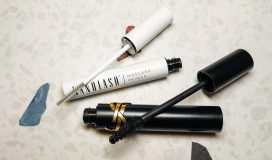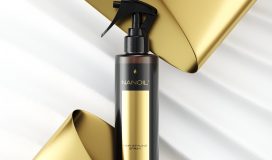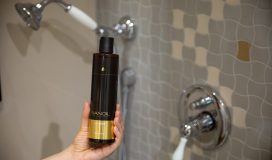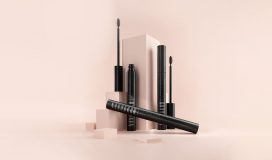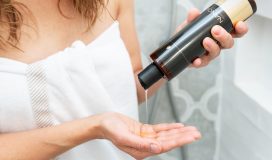In order to maintain the hair’s good condition and outstanding appearance, it is essential to introduce proper balance in the care products. On a daily basis, the hair is provided with substances from the three basic groups responsible for its appearance and care. The secret lies in the balance and the right proportions. Have you ever heard about proteins, emollients, and humectants in hair care? If not – you’re about to discover it 🙂
1. What are emollients in hair care?
In the whole hair care regimen, emollients are considered the most crucial products. Why? They are responsible for its health, youthfulness, and regeneration. Emollients protect the hair from damage, against weakness, loss, color fading. There is just one condition, they must, of course, be properly selected. The best emollients for hair, are plant oils and butter as well as natural waxes (lanolin, jojoba). But this group also includes: fatty alcohols, paraffin, silicones.
If you don’t want your hair to be overburdened with heavy synthetic emollients – always remember to choose natural oils that will nourish not just the entire length of hair but will also improve the scalp condition and reinforce the bulbs. What’s more – their molecules and the diversity of fatty acids allows them to match the specific porosity of the hair which is connected to the hair scales and depends on whether the scales are overlapping one another or have gaps and holes.
Emollients – the valuable ones – are substances that can be used on a daily basis without any imitations:) They do not damage the hair, do not weigh it down, but perfectly cleanse the scalp and protect the hair from adverse external factors and high temperature. Natural oils are also often the go-to products after applying excessive amounts of proteins.
2. What are proteins in hair care?
Equally important ingredients, responsible for the appearance and health of the hair. Proteins are a group of ingredients that are the basic building block of the hair. They are extremely important in the care due to being responsible for rebuilding damage on the hair surface. They strengthen the hair’s resistance and repair any defects – nearly like a well-coordinated renovation team.
Proteins are made of large and small particles – each of these groups has another “to do” mission, also significant for the hair:
- proteins with larger particles – they protect the hair against damage, prevent moisture loss, create an occlusive layer on the surface;
- proteins with small particles – they fill in cavities and damage in the interior of the hair.
What proteins can you find in shampoos and conditioners?
In general, they are divided into ‘the large ones’ and ‘the small ones’ (ie, hydrolysed). They include:
- dairy proteins,
- silk proteins,
- wheat protein,
- oat protein,
- corn protein,
- rice protein,
- soy protein,
- collagen,
- elastin,
- keratin.
Smaller proteins include:
- hydrolyzed keratin,
- hydrolyzed silk,
- hydrolyzed elastin,
- hydrolyzed milk proteins,
- hydrolyzed wheat proteins.
If you notice that your hair is limp, quite unruly, without life and vitality, it is difficult to arrange – it means that it suffers from protein deficiency. It is worth having a hair mask with protein content at hand and use it as needed.
What else do you need to know about proteins? It turns out that they are very moody. How come? Apparently, it is very easy to overdo with them – both in terms of deficiency as well as excess amounts. Dry, rough and extremely stiff hair that loses moisture (proteins have the ability to absorb water from the inside of the hair) are the signs of hair overloaded with proteins. The rescue for the overproteined hair comes with the priceless emollients. Therefore, if you notice such symptoms – reach for natural oils and perform oil hair treatment:)
3. Humectants in hair care
You might have noticed that a certain group of substances is still missing – the products responsible for moisturizing. This is the third section called humectants. This is the name for tiny particles with hygroscopic abilities. They bind water in cells and hydrate thirsty hair with water.
Of course, their use should also be moderated. Otherwise, they can increase frizz (just like most hair on a rainy day and in high humidity). I know that it might sound monotonous, but in this case, there is also no better help than emollients, in other words, natural oils or waxes.
What humectants should be included in hair care? There are a lot of them, and the most important are:
- glycerol,
- panthenol,
- aloe,
- hyaluronic acid,
- honey,
- lecithin,
- urea,
- sorbitol,
- fructose.
For hair to be beautiful and full of vitality, it is necessary to carefully choose ingredients from all three groups: too many humectants and proteins, or skipping ingredients from one of the groups can make the hair lose its condition quickly leaving you with effects that are far from what you expected.
